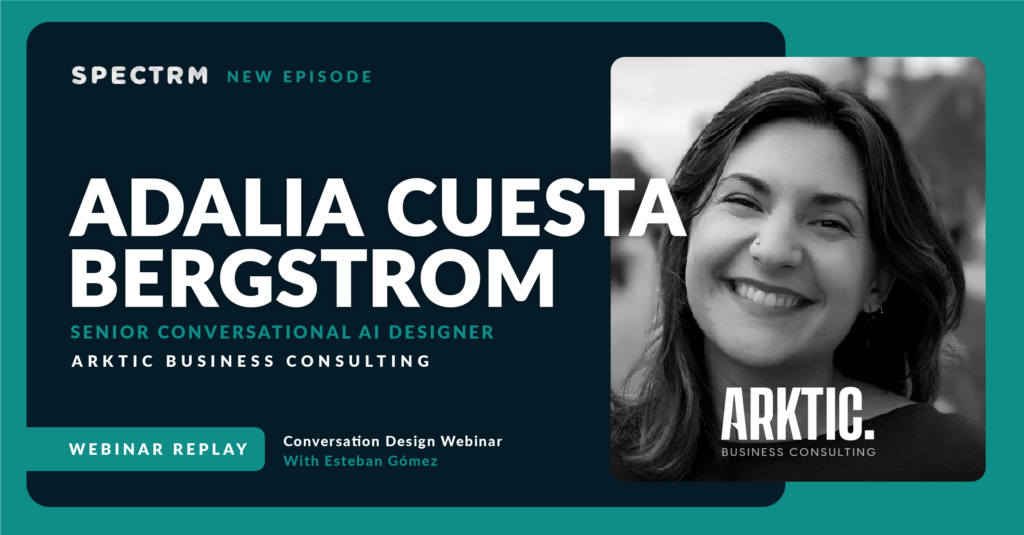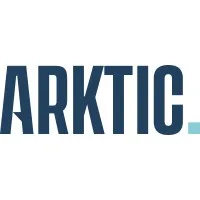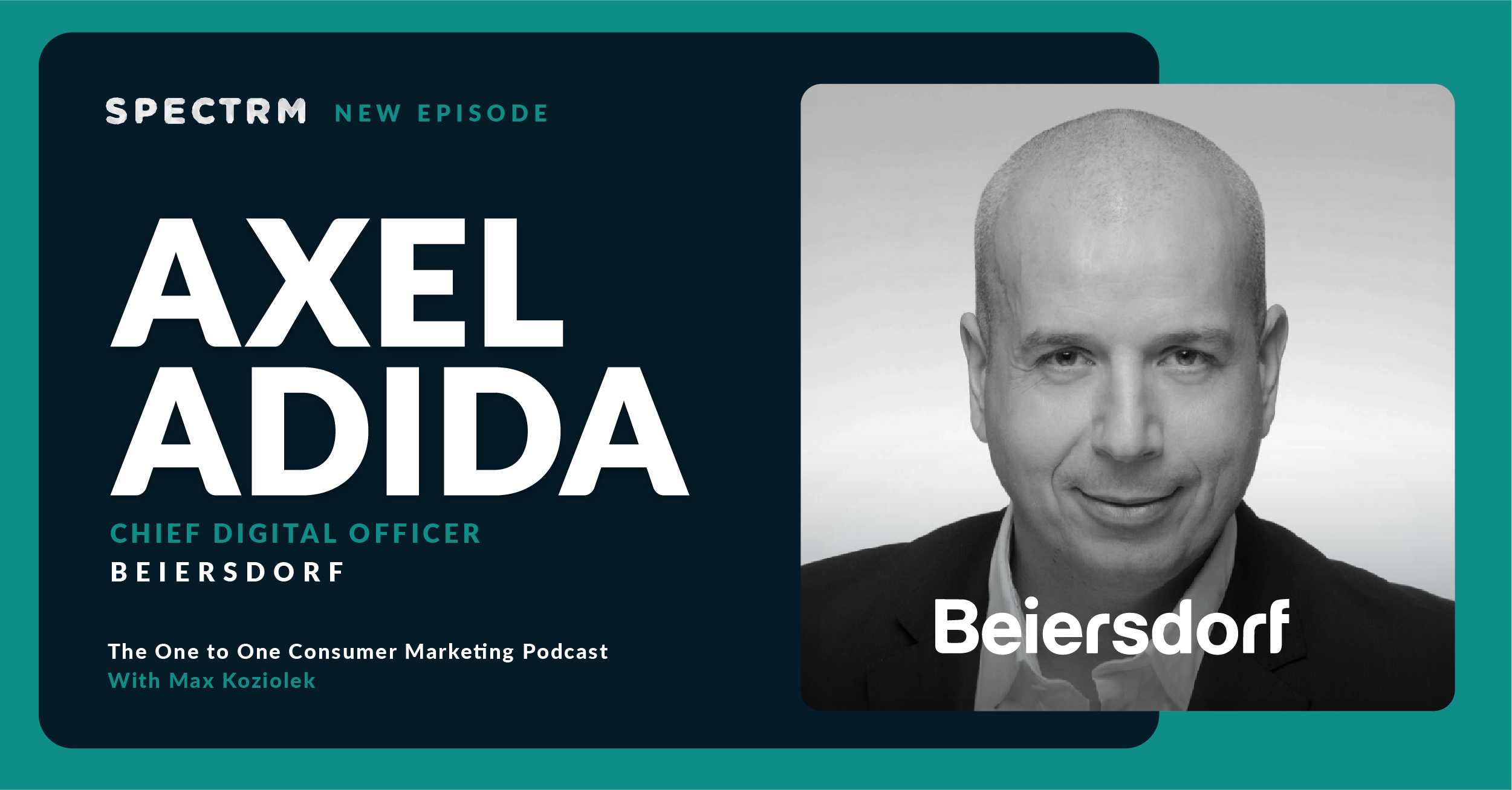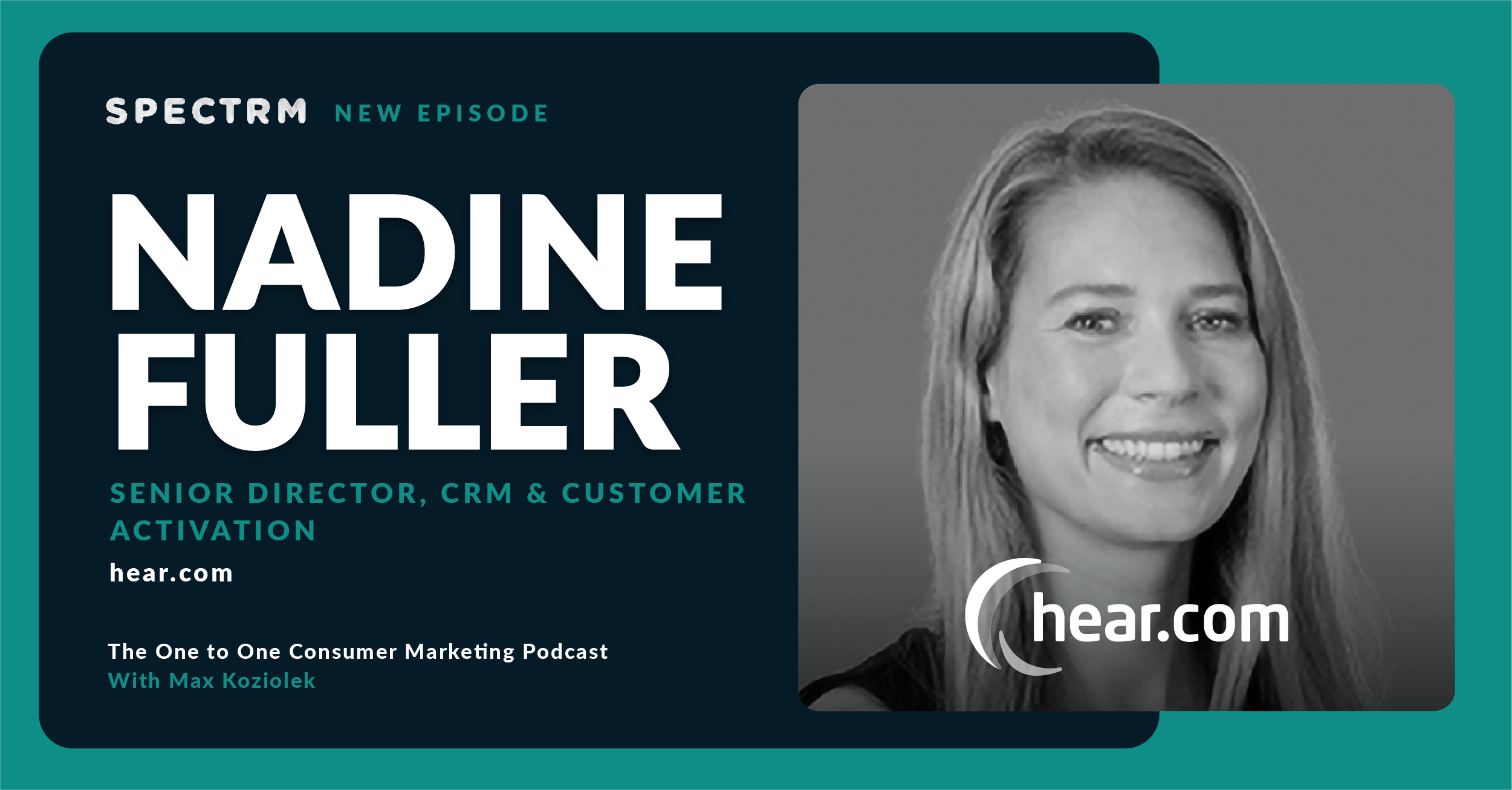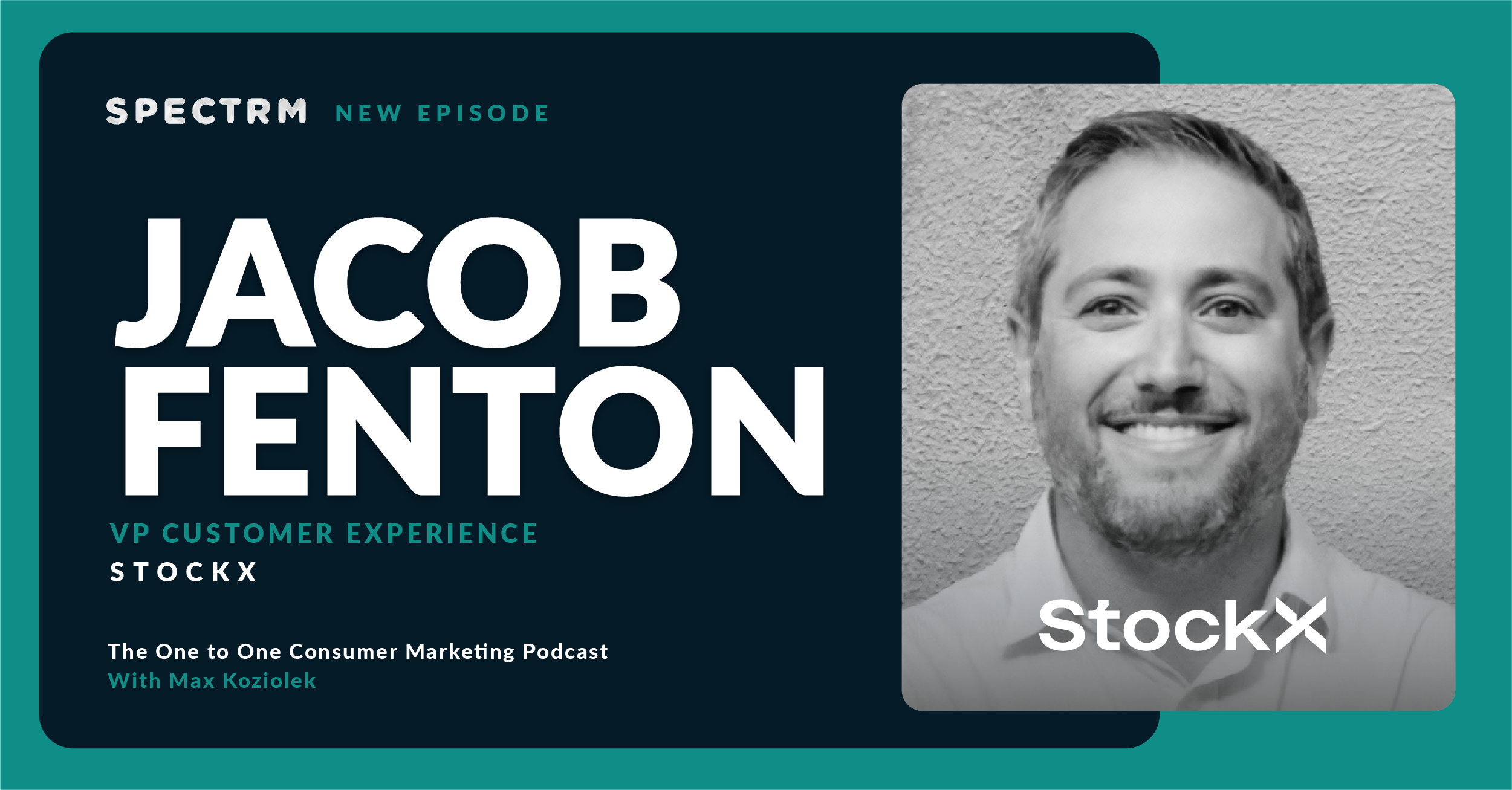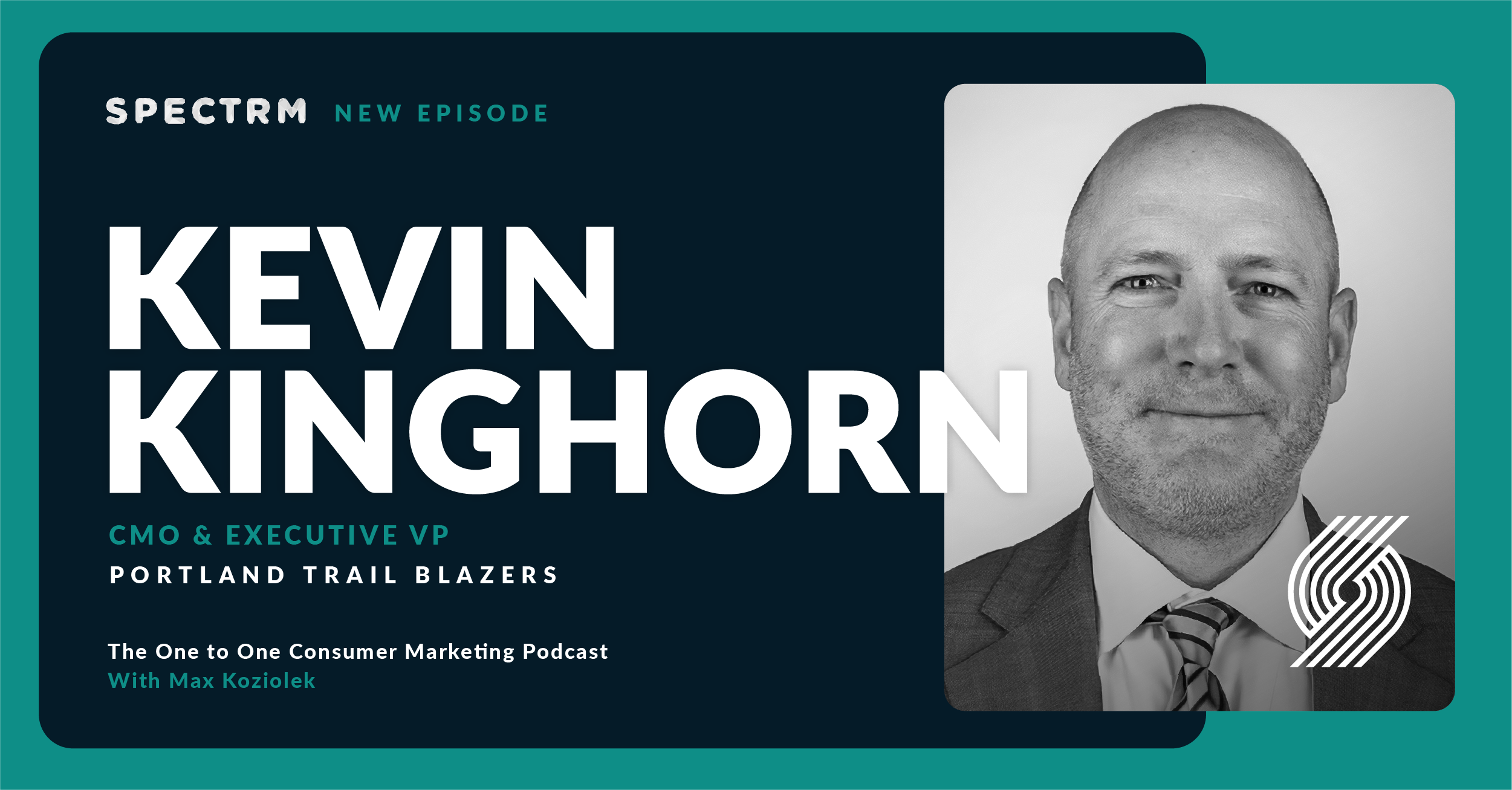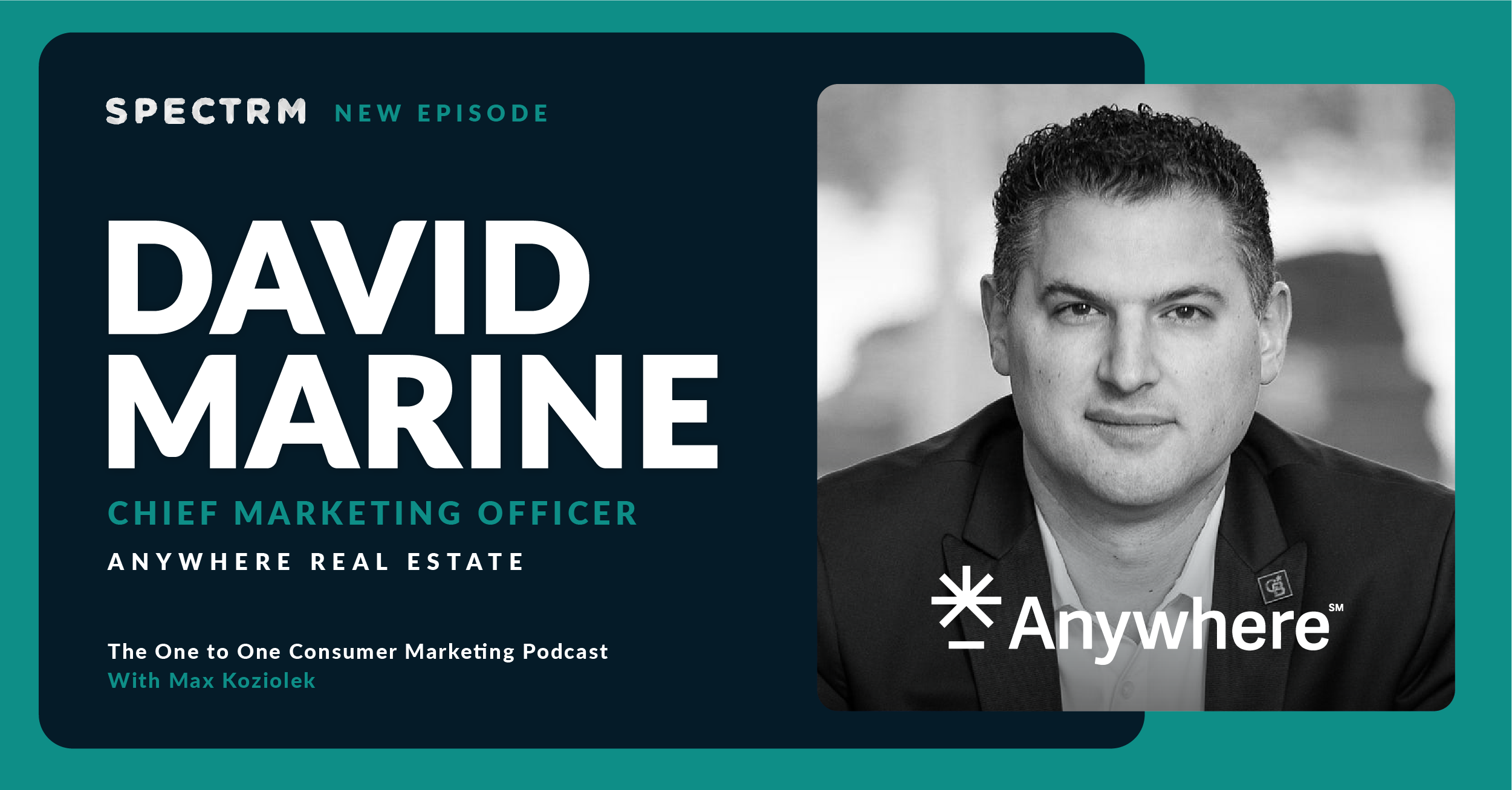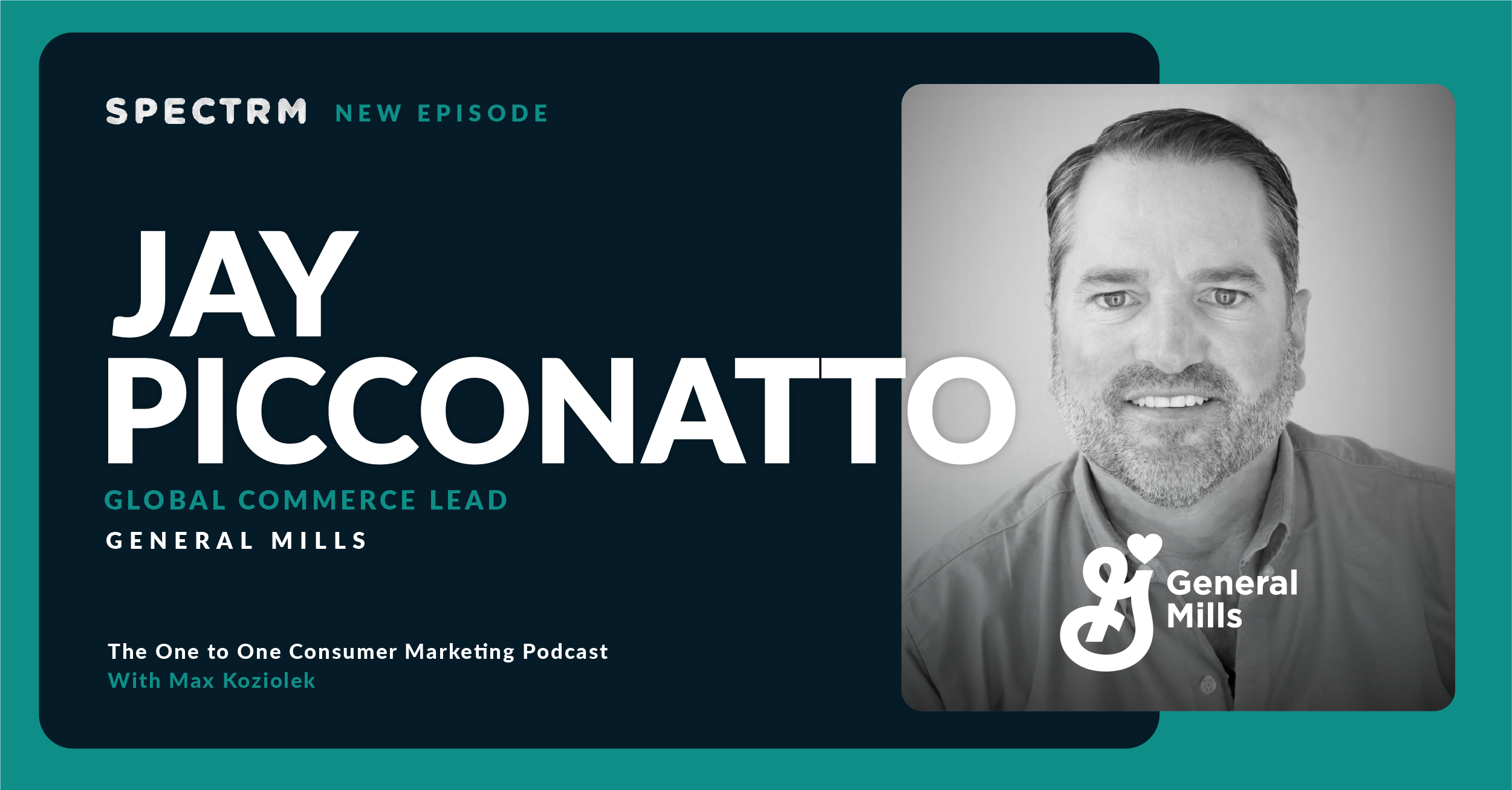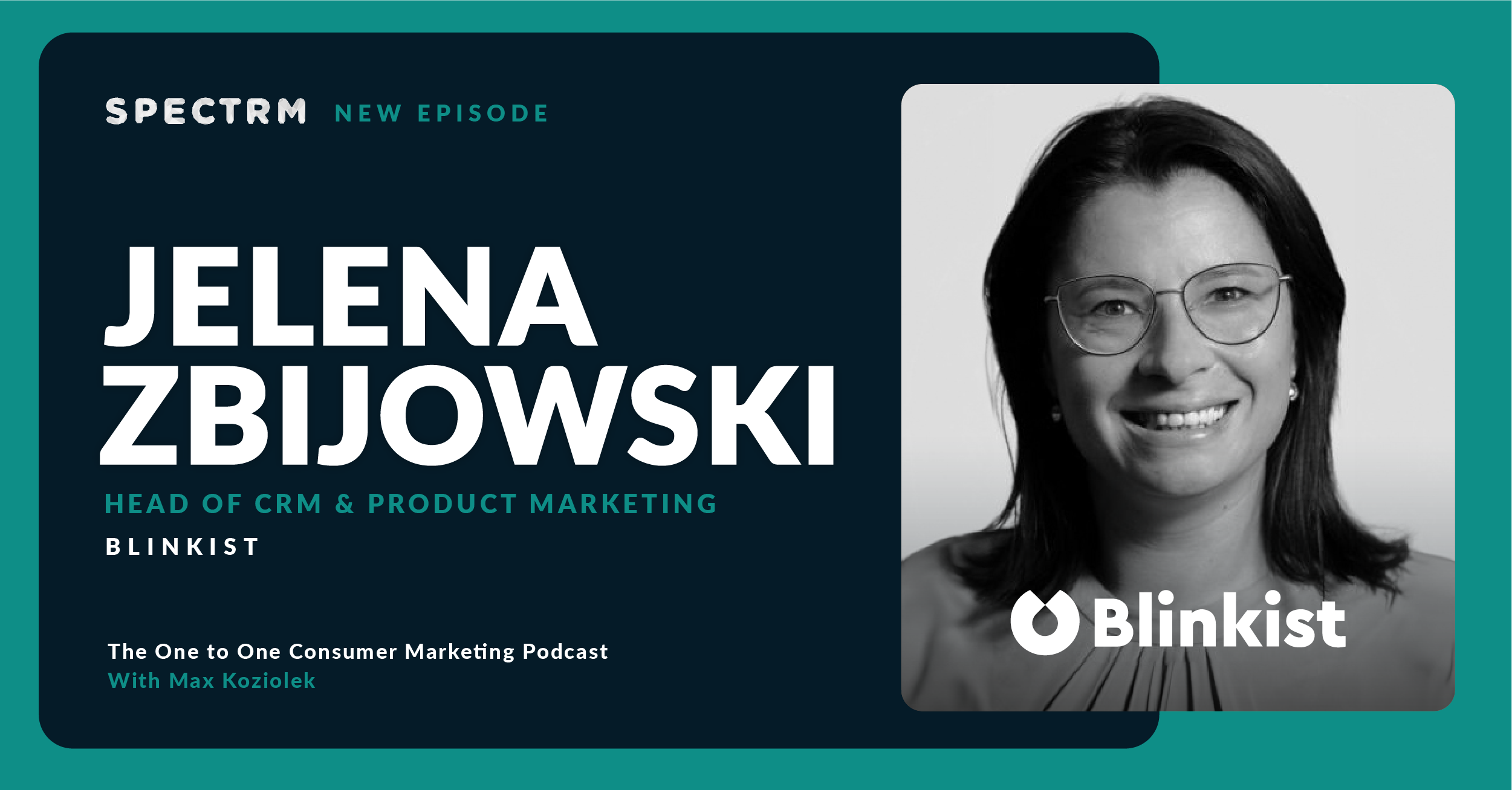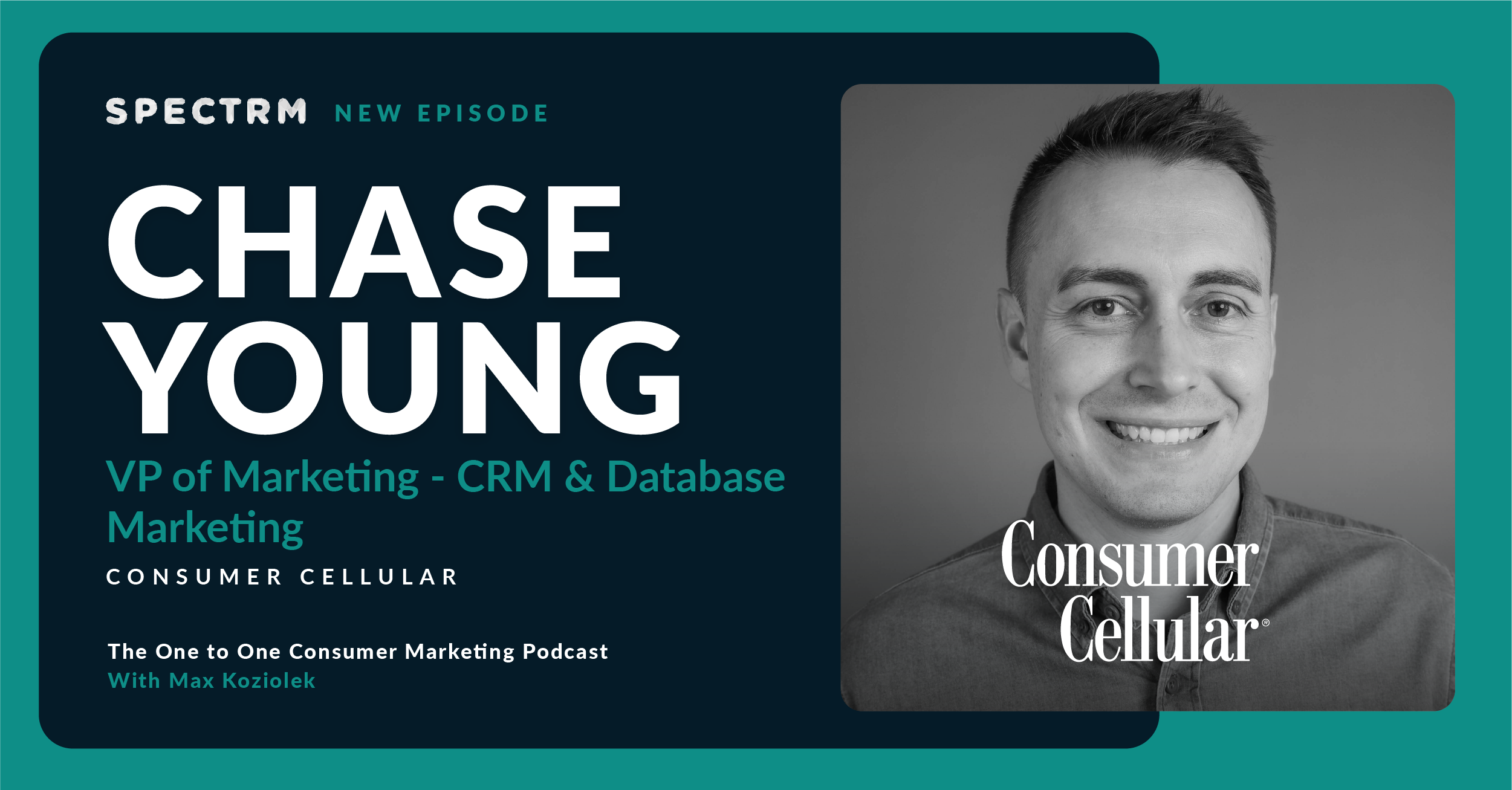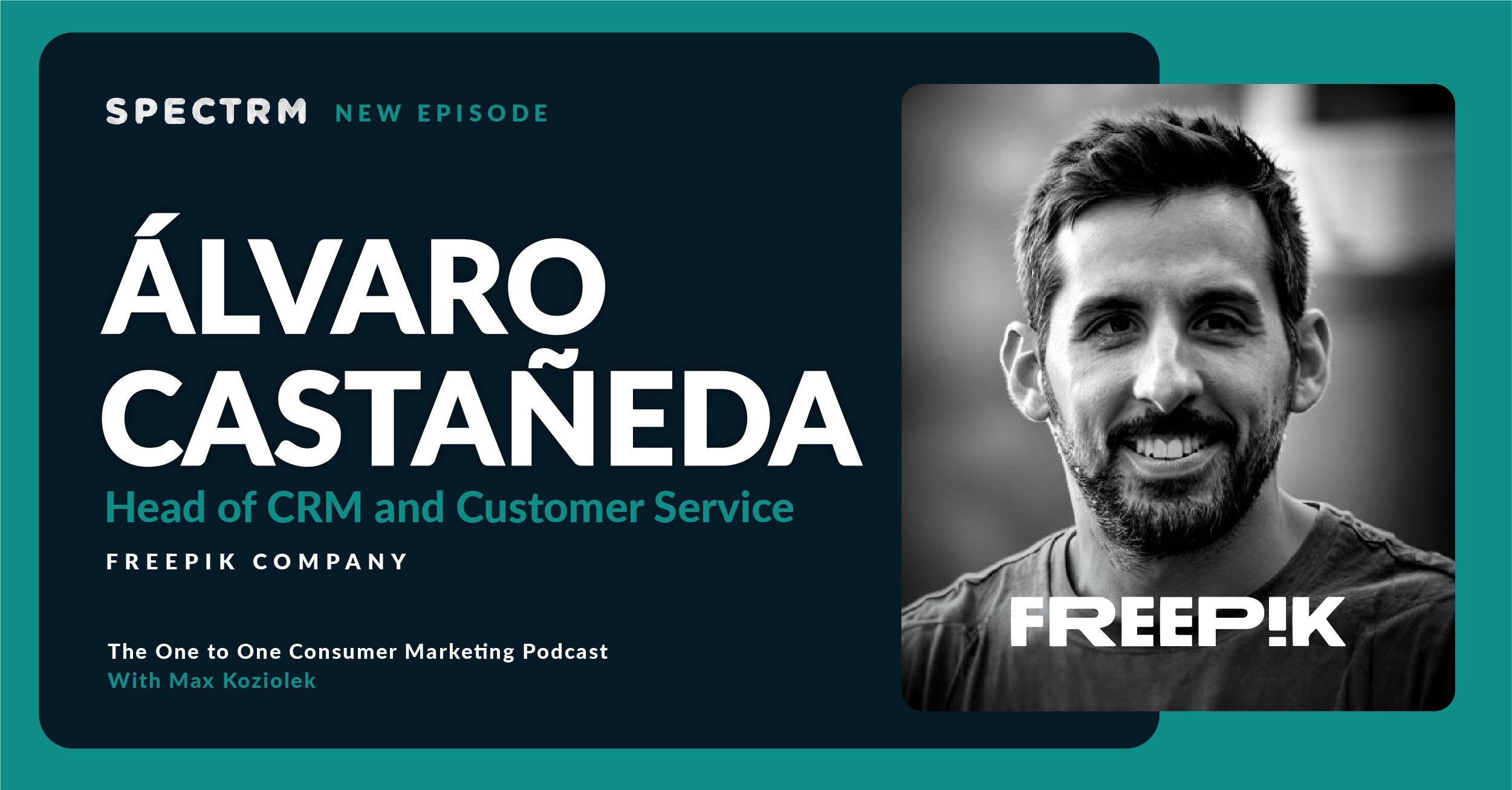Summary
In this episode, previously recorded as a webinar, Spectrm’s Conversation Designer Esteban Gómez, speaks with Adalia Cuesta Bergstrom, Senior Conversational AI Designer at Arktic Business Consulting. They discuss the fundamentals of how to design conversations for chatbots, including thinking through possible paths, designing for specifics, and the importance of voice and tone. They also talk about the steps for conversational design, how to humanize your chatbot, and how customers won’t remember whether it’s a bot if they have their questions answered.
Topics discussed
- The evolution of the role of conversational designer across different companies and industries.
- Why the most important factor in designing a conversation is to make sure the user feels heard, and why you should design for specifics, not generalities.
- The importance of voice and tone in a chatbot conversation, and why it should shift depending on the situation.
- The reason why companies should make users aware they’re speaking to a chatbot.
- The best thing you can do to make your chatbot human.
- How customer service chatbots differ from marketing chatbots, and how companies can get the content correct for either use case.
- The process for designing a conversational chatbot and how it’s a multi-team effort.
The most important thing when I am designing a conversation is to make sure that the user feels heard, because there are many types of virtual assistants, but mainly, I work with assistants that are there to solve problems that the users have so that they can be more autonomous and they can do things for themselves.
Guest biography

Adalia studied Modern Languages, Culture and Communication at the Universidad Autónoma de Madrid and specialized in language consulting, creative writing and editing and proofreading. She then completed her Master’s degree in Digital Letters at the Complutense University of Madrid.
She started her career mainly working related to the linguistic field (training different cognitive engines such as IBM Watson, Oracle or DialogFlow). She later transitioned to designing conversational experiences, in which field she is currently working.
Company overview
Arktic is a business consulting firm with experience and focus on the financial industry: banks, asset managers, fintech and insurance companies. The sector in which we operate is traditional in its foundations and its basic business has been developed for centuries. Like the ice caves in the Arctic , it evolves, constantly mutates, grows, branches and has the permanent obligation to adapt and adopt new ways of understanding the world.
Industry: IT Services and IT Consulting | www.arktic.es
Subscribe to the podcast newsletter
Transcript
00:06
Esteban Gómez
Hello, Adalia. Good morning. How are you today?
00:09
Adalia Cuesta Bergstrom
Hi. I’m fine, thanks.
00:11
Esteban Gómez
How about you? I’m good, thank you. Obviously, first of all, I’d like to thank you for allowing us to set this one up and also for being part of this, hopefully an upcoming series and talks about conversation design. So thank you very much.
00:25
Adalia Cuesta Bergstrom
Thank you for giving me this opportunity.
00:26
Esteban Gómez
You’re welcome. So I think it’s always really nice to start by trying to figure out exactly how we get to be together here in today’s session. So, obviously, we get back quite a long time ago. Right. We have a very similar background or some sort of very similar background or status. But nowadays, you’re currently working in a consulting company called Arktic, right?
00:50
Adalia Cuesta Bergstrom
Yes.
00:51
Esteban Gómez
And can you tell me more about what’s the current position that you do there, and what’s the business like at Arktic?
00:57
Adalia Cuesta Bergstrom
Okay, so Arktic is a quite young consultant firm. It is a new consultant firm that has very specific values about how consultancy should be done these days. And it’s more centered on giving the employees opportunities that make them grow and also caring about what the business want. So many consultants firms are just centered around money. Money. They don’t care about necessities of both parts.
01:25
Esteban Gómez
Yes.
01:26
Adalia Cuesta Bergstrom
So this is a really cool thing about Arktic, that they give you the opportunity to empower yourself through your work and through their projects. And there I am, senior conversational AI designer, because position in the banking sector.
01:45
Esteban Gómez
Okay, very nice. Okay, so actually, that title is really nice. It’s one of those, back in the day, you and me, were starting discussing when were together in another company called entity Data. Right. That’s when we met. And you were conversation designer as entity data, and I entered as a computational linguist doing my mentorship. And I do remember those days very fondly. And I remember that you and I, were talking about how I wanted to kind of do the next step and do the leap into the conversation design. And one of the things that I discussed with you was the branding and the naming of the title. Right. Because it was very back at the very beginning. Like, how long ago was that? Like four years ago, I think almost four years ago. Yes, I do remember that.
02:31
Esteban Gómez
It was not many roles out there and the naming for it was very like conversational designer, user experience designer.
02:40
Adalia Cuesta Bergstrom
CX designer with designer customer experience designer. And it’s quite misleading.
02:46
Esteban Gómez
Yeah. So I do remember those ones. I guess nowadays we are more in a better position to find roles. They are more suitable to our job and our statistics. Right. So nowadays, I think it’s easier to find jobs around conversation design or, like, conversation designer, per se.
03:03
Adalia Cuesta Bergstrom
Yeah. And I think that’s really cool, because when I started, designers were, like, the last person project manager thought of to start a chatbot project. And I think that over the last almost six years, we have consolidated our position and shown our value, and it’s exciting to see so many opportunities. But to me, it’s quite puzzling because I see the positions. But I also know that it’s really difficult to find conversation designers for the roles because not so many people are really focused on conversation design. Sometimes most people have it as a side specialty, but as the main specialty one. Yes. I think it’s really interesting how it’s starting to shift.
03:53
Esteban Gómez
Yeah, no, definitely. I think one of the first things that we need to kind of discuss right now is the background. Right. So what’s your background? How do you get, first of all, in conversation designer and what is your background?
04:06
Adalia Cuesta Bergstrom
Okay, so my background is mostly similar to yours because I studied modern languages, specializing Spanish and Japanese. Yes, but don’t ask me to speak in Japanese, because I remember much. And then I did my master’s degree in digital letters, which you did. And I entered the conversation world by chance, because I was looking for internships at the master, and I was specializing in digital collections. So I had to choose a library or a company that specialized in digital collections for my internships. But there weren’t any offers. So I remember that at the time, we got an offer from a technology firm for a computational linguist, and I there, but I didn’t get that position. So I was speaking with my now ex, and I asked him, wouldn’t your consultancy firm want a computational linguist?
05:05
Esteban Gómez
Yeah, just by chance, yeah.
05:07
Adalia Cuesta Bergstrom
And he was like, let me ask. And he asked, and they needed one, and I applied, and I did the interview, and I got in as the first computational linguist in Everest.
05:21
Esteban Gómez
One there. Wow. No pressure, right? So no pressure at all. Just shading character llns and be like, oh, yeah, sure, yeah.
05:32
Adalia Cuesta Bergstrom
Because it was such a new role. And on the first day at Dario got it. The person that did my onboarding asked me if when you were starting your degree, somebody would have told you that you would end up at a consultant film in technology working to create chatbot, what would you have said? And I was like, I would have laughed in their face.
05:53
Esteban Gómez
Yes, true. I think that’s a really key point that you just mentioned there, since we have a really similar background. If someone has asked me back in the day, would you have imagined in a few years that you were working as a conversation designer after having studied English and German at uni, I would have said, well, first of all, what the hell is conversation design and what is that for? And then secondly, I’ll be like, no, I don’t think so. Because that was so not in my radar. Right? We all know about linguistics, right? And how important is to have linguistic background in this field. I would say computational linguistic was not something that it was. I don’t even remember. It was taught at university back in the day. Like degree level.
06:39
Adalia Cuesta Bergstrom
There’s a degree, but it’s not very published, because I only got to know about it when I was in my master’s degree because some of my colleagues had done this degree. But no, and even when you are doing your specialization in the last year of your degree, it’s like residual. Because I had one class about computational linguistics, just one. And nowadays I think that it should be really important because it’s what we are leaning to.
07:09
Esteban Gómez
No, definitely. I think there is a shift, as you said before, there’s a shift in the industry and in the whole world towards, okay, so we understand linguistics, but now computational linguists is something else. And also it’s something different to conversation design. Right? So there’s a difference between being the person making sure that the chatbot or the virtual assistant understands the end customers versus someone who creates the whole experience, a conversational experience for them. So it doesn’t need to be, they can all go together, because in some companies, they still go together. They are not exactly the same.
07:44
Adalia Cuesta Bergstrom
No. And that’s why I changed to conversational design, because making sure that the assistant understands you is really important. But if you don’t design a great conversation and have the main goal in your head when you’re designing and what is going on in the user head when they are speaking with chatbot, if you can bring it as good as you want. But if the conversation is not well built, it’s not going to end well.
08:11
Esteban Gómez
Definitely not. Yeah, that’s so good. Such a highlight here. Right? So the training of the tag board or the training of the virtual assistant is just a fundamental part of it. So the database for it is as good as the data that you have for it to trade. However, the conversation is as like, the conversation is, at the end of the day, what the users are going to go through and then going to go down the funnel. So they really need to have a great experience, a conversation experience. So they’re having like a one to one conversation with the virtual assistant and not something that they’re talking add something. Right, exactly. Very nice.
08:47
Esteban Gómez
Well, I mean, as you know, we at the Spectrm, we are working in conversational marketing, and one of our main aims is having a one to one conversation with the end customers. So it’s not something that the users talk to a chatbot or to a virtual assistant, or like a company talking as a end user, but more of a one to one conversation. So I guess that also you like to bring that forward in all your clients use cases, right?
09:12
Adalia Cuesta Bergstrom
Yeah. For me, the most important thing when I am designing a conversation is to make sure that the user feels heard, because there are many types of virtual assistants, but mainly I work with assistants that are there to solve problems that the users have so that they can be more autonomous and they can do things for themselves. Mainly, users ask the bot a question, which is a problem, like, I don’t know how to do this, or I don’t know about this specific type of thing of the website, or I don’t know where to find this. So you have to design with that in mind. And sometimes you design it in a very general way.
09:55
Esteban Gómez
Yes.
09:55
Adalia Cuesta Bergstrom
And you don’t cover the specifics. And it’s in the specifics that it’s the key to success, because it’s where the user is going to contact you. Because if I can do it, but I have to look around for a bit, I can do it by myself. But if it’s something very hidden or I am not very digital, I’m going to need more help. And that’s where conversational design gives value to the conversation. You think about the problem, you talk to them in a very clear and empathetic way. That’s very important. But you also let them know that the users are speaking with a computer.
10:30
Esteban Gómez
You don’t try to sound of that.
10:34
Adalia Cuesta Bergstrom
Okay? Yeah.
10:35
Esteban Gómez
Okay. I think this is a twofold question. So let’s start from the first question that I got from your answers and from what you just said. Let’s say there’s quite an array of virtual assistants or chatbots out there, right. So your focus is on customer support. Virtual assistants or chatbots?
10:52
Adalia Cuesta Bergstrom
Right? Yes.
10:53
Esteban Gómez
And what would be the main field of customer support that you are now focusing on? Because I know that you’ve been working in the past for big brands such as Iberia, I think telephonica, was it. Right.
11:07
Adalia Cuesta Bergstrom
Yeah. Right now I’m working with spanish bank. And I can say anything more about that secret? Secret? No, but nowadays it’s banking. But until recently, I was with Iberia and Telephonica, also Uniqlo. Yeah. A lot of projects bodafonto such different sectors. But mainly the main objective of all of them is to solve certain questions of the user or help them do tasks. For example, in Iberia we had both things. We had the customer help part for. I have a problem with my check in. I cannot do it. I cannot find my tickets. What do If I want to cancel a flight?
11:55
Esteban Gómez
No, those types of questions, very specific and very leaning towards. I just said the supporting part of the flow. Right?
12:02
Adalia Cuesta Bergstrom
Yeah, but we also added some value by adding tasks that you can do on the web, but empowering them through conversation. For example, you can check your flight status on the web and it’s quite easy. But how many clicks do you have to make to get the information?
12:23
Esteban Gómez
We’ve been there. We’ve been there. All of us. Yes.
12:26
Adalia Cuesta Bergstrom
So it’s like eight clicks, let’s say. But with conversational design, if I ask about, I want to know if my flight for tomorrow from Madrid to Bilbao at 10:00 is canceled.
12:39
Esteban Gómez
Yes.
12:39
Adalia Cuesta Bergstrom
And you have just one utterance or one query and the bot is capable of understanding your intention, which is flight status, to get all of the entities that it needs to give you answer.
12:54
Esteban Gómez
Love the fun of those keywords. Yes, we have a user utterance or like a user intent, and then we have the different entities within and the attributes within that attribute. So in just one single uterance from the user, you can get all the information there.
13:09
Adalia Cuesta Bergstrom
Yeah. And that for me is the most important thing that we can do. Solve the user query with just one uterance.
13:19
Esteban Gómez
Love the sound of it. Love the sound of it. One of the things that I like to discuss about, you mentioned different companies and different fields. Right. So obviously you said that you’ve been working on telco companies, also in traveling, leisure companies, banking, insurance companies. I know that because we’ve been working in an insurance company together.
13:39
Adalia Cuesta Bergstrom
That’s right. I didn’t remember that.
13:42
Esteban Gómez
Yes. Remember that we worked for this company. Doing the chat was that you were doing the part of the conversational experience and I was doing the training for them. But what’s your opinion and what’s your take on voice and tone? And why do you think it’s important to have voice and tone? And I think I have my own opinion, but I think I want to hear also your opinion.
14:02
Adalia Cuesta Bergstrom
Okay. So to me it’s one of the most important things because the interaction, user and company is through conversation. And conversation is words.
14:15
Esteban Gómez
Yes.
14:15
Adalia Cuesta Bergstrom
So you have to have a proper noise and tone that goes accordingly to companies tone. It should be in the same line, and you should communicate companies values through the conversation and so on. And also with conversational assistance, we have a new feature which is modulating the tone to the situation. Because you have many use cases, you shouldn’t speak to the user the same way when you are selling a product as when you are filing a claim, for example, telling you, I need to fill a claim or I have a problem, my house is on fire. Yeah. But for insurance companies, like, you cannot tell them, oh, sorry to hear that. Let’s do something about it. No, you have to.
15:06
Esteban Gómez
That’s a good example, because I always talk to my clients about that. Right. So how important is the voice and tone? And I do remember coming back to the insurance company and to this example that you just done. I think it’s great to, one of the things that I do in my conversational workshops that I have with every client, when we kind of establish and translate the use case into a whole experience, like the first draft of the experience, I highlight importance, having a voice and tone and the personality of a company in it. Right. So I always go for, what’s the kind of personality for chatbot? But I think some clients have a tendency to think that the whole chatbot would need to remain with a whole personality. That personality doesn’t change.
15:49
Esteban Gómez
So the chatbot is helpful, but is really enthusiastic and is witchy and is really upfront but really helpful. And it’s like, yeah, so that’s amazing. But that will be for some specific use case. But as you said, if you have someone, a user coming into the chatbot and be, hey, I suddenly got robbed, or my house is on fire. And as you said, oh, my God, really? That’s such a BT. Let me help you.
16:17
Adalia Cuesta Bergstrom
Yeah. Or when they are frustrated, because it’s not the same if I want to transfer some money, or if I am like, I cannot transfer the money, I am doing exactly what you are saying, but I cannot do it. And you cannot start telling the user, don’t worry, it’s so easy. We’ll do it in no time. You can do that. You can’t do that. And so I think we have a long road here to cover in our field of work, but I think that companies are starting to be more conscious about it, especially thanks to Twitter, because with some projects, our chatbots have ended up in Twitter with people complaining about the service. And they are right, because it’s like there’s no empathy computer.
17:04
Esteban Gómez
And that has brought me back my question.
17:08
Adalia Cuesta Bergstrom
Thank you.
17:11
Esteban Gómez
In sync. It was around making sure that the users know they’re not talking to a human, but they’re talking to a virtual assistant, chatbot robot, whatever you want to call it. Artificial intelligence, whatever you want to call it. I always say this to my clients from the very beginning, the welcome message, everything, that when you start a conversation with the assistant, you really need to say from the very beginning that they are not talking to a person, because that’s misleading. Why would you say that is the reason? What’s your take on that point?
17:47
Adalia Cuesta Bergstrom
Because up until now, we have llm’s, stability, llama Bart, et cetera, that have made a change really quick. Okay. But still, conversational assistants have limited capacities.
18:04
Esteban Gómez
Yes.
18:04
Adalia Cuesta Bergstrom
So if the user knows that they are speaking with a computer, they are more receptive to unhappy paths, like errors or misunderstandings or not being able to complete a task. Because if that they are speaking with a human, their possibilities are endless. Because humans can link some new information to old information and can say, I cannot do this for you, but I can transfer you with the right department, or you can do this. In the web, they have more opportunities to solve the conversation, whereas conversational assistants have limited things because they only can do what we program them to do.
18:43
Esteban Gómez
Yes.
18:45
Adalia Cuesta Bergstrom
We can try to tell the users that they are speaking with a conversational assistance in the welcome message, but users don’t read, so you have to do more things than that. But like the avatar or some types of messages. So if you set those expectations from the beginning, the users are more cooperative with the computer.
19:07
Esteban Gómez
Definitely. I think it’s true that not only the welcome message should be just this stage in the fact that you’re talking to assistant to a chatbot, but it’s always because, as you said, some users may not read that message, and they go right away into the main objective for being at the board level. But I would say that definitely we need to restate somehow, eventually and more often. Hey, you’re speaking with a chat, but you’re speaking with a virtual assistant. I cannot support you in this task specifically, or I cannot give you more information, but I can pass you to an agent that can do this. Someone can give you more information than me. But by stating that and making sure that the users know from the very beginning that you’re talking to average assistant, you’re managing their expectations, and that’s the best thing.
19:55
Esteban Gómez
And you need to put forward and move forward with, because you don’t want bad experiences at the end or end up in Twitter being like, hey, this is frustrating.
20:05
Adalia Cuesta Bergstrom
Exactly.
20:06
Esteban Gómez
Okay, sounds good. And then one of the things that I talking back into conversation design experience is about how do you make the chatbot more human like? Do you have some tips around that? Do you have some elements that you always incorporate in your flows to make them more human like or it’s based on the use case that you go for?
20:29
Adalia Cuesta Bergstrom
I think it depends on the use case and it depends on the company, because, for example, there are some chat bots that I have made that appear to be really close to the user, okay. Because their tone is relaxed, they make exclamations, they use emojis, and they are prepared for the unexpected because we try to cover all of the cases. And there are some chat bots that are more utilitarian and the tone is more neutral. Okay. But for me, the important thing about to be human is to be able to solve the task. Not too much in the tone. I always say this, why should we put effort on trying to greet the user by name if we are not going to be able to complete their task?
21:17
Adalia Cuesta Bergstrom
So if I humanize the bot, I do it by thinking of all of the possible things that the user is going to ask the bot and then trying to solve them. Because when the user is speaking with the virtual assistant, mainly in customer care bots, because with marketing bots, I think it’s a different story because you are trying to do different things there. But here, the important thing is to solve the task. If you solve the task, when the user hangs up, and I have verified this by user testing, they don’t remember, for example, in call centers, when they call, they don’t remember the voice of the virtual assistant. They don’t remember the tone. They don’t remember if the virtual assistant was kind, was funny.
21:57
Adalia Cuesta Bergstrom
I asked them, and they are like, yeah, I think they were nice, but I don’t know if it was even speaking to a human. They can’t remember that.
22:04
Esteban Gómez
Oh, wow.
22:05
Adalia Cuesta Bergstrom
If they have solved the task, but if they haven’t, they are like, it’s another computer. They can’t do anything. They remember that they spoke with a computer because they weren’t able to solve the task.
22:16
Esteban Gómez
True, as you said. Right? So if the client or the customer at the end of the day, has managed to accomplish the task, they are more willing to forget, or they are more, or they’re more prompt to forget about elements that may have not been that important if that task hasn’t been resolved.
22:36
Adalia Cuesta Bergstrom
Yeah.
22:37
Esteban Gómez
Okay. All right. And do you have any questions around, since you’re talking about conversational marketing and you do virtual assistance marketing, virtual assistance for marketing. Do you have any question around virtual assistance for marketing for me that you may kind of like, dig in?
22:52
Adalia Cuesta Bergstrom
Yeah, actually I haven’t worked with many marketing virtual assistants, so I wanted to ask you, what is the main focus that you put on this virtual assistants, what is their main objective and how do you modulate the tone and voice? Because I know that’s different. Because you are pursuing different things.
23:10
Esteban Gómez
Yes, really good question. So as you know, so I do conversational marketing for really quite big brands. So as you said, it’s a whole different flow, it’s a whole different path. It’s a whole different approach to creating conversations. If it’s customer support or conversational or marketing, because as you said, you’re trying to do something else. And in this case, it’s pursuing the end customer to do a specific task that in this case is more related to marketing. Either buying a product, a specific product, or guiding them through a guidance selling. So at the end of the day, it’s more about getting to know or leading the user to get more information about the brand, about the products, and in the end purchase them. Right. Or acquiring them.
23:53
Esteban Gómez
So in this case, what I would do is, first of all, we have, as you also probably have, is the conversational workshop. So where I understand more about the use case that they want to do, what’s the main idea for the chatboard? And once I have more information onto. Okay, what’s the main objective? What do you want to do? So currently we have a really big american brand for cars that they are trying to create awareness about the vehicle lineup, electric vehicle lineup, and they want to make sure that the users, or potential end users understand what’s the great value about these vehicles and also leading them to, at the end of the day, convert to potential buyers, which is quite tough because remember, always it’s a really big brand and really quite expensive brand.
24:42
Esteban Gómez
So at the end of the day, trying to make sure that buyers are purchasing cars through either Instagram, WhatsApp or quite, they might not be straightforward or they might be adamant to actually go and buy a car right from the chatbot. So the idea in this specific case, it would be more about leading then and lead generation and to create the awareness onto why these cars are so great. What can you do with these cars that you cannot do with others? So learn more about the vehicle and giving them that experience onto. We always talk about having an agent. Right. So someone that kind of guides you. Right. So in customer support is more guiding you to complete your tasks and in marketing is more guiding you towards discovering the product.
25:29
Esteban Gómez
So as you go into a store and you have someone like a body guiding you towards the, hey, this is what it is best for you. This is what it suits you best. So in this case, it’s more about a companion, if that’s even a word. Like guiding the user towards learning more about the product. And at the end of the day, making them feel empowered to buy the product.
25:53
Adalia Cuesta Bergstrom
Yeah. And when you were talking about how you accompany the user to finally purchasing a car, I wanted to ask you related to the tone and voice and how you create the messages. How do you walk the line between the marketing part of the copies and the conversational part? Because I have encountered some cases where people are really contaminated by the marketing part of creating messages and communicating with users. And they are always like, no, but we should tell them, here, buy this product because of all of these awesome benefits. And it’s like, imagine that you are speaking with me and you tell me this text and you say it. What do you expect? Because it’s not natural. And how do you navigate through that? Because it’s really frustrating sometimes.
26:42
Esteban Gómez
It’s frustrating and it’s hard. And I definitely feel it sometimes because it’s true. Conversational marketing. There is really, the line between marketing and conversational is very fine, and you can really get contaminated by marketing messages in those conversations. So what I like to do is always have, like, I create a copy for most of these clients. So what I would do is I’ll go through what they really want to sell or what they want the product that they want to promote. And then I will try to see exactly how we can incorporate those elements of marketing, making them more conversational. Meaning if the client says that, oh, we want to really say that this car is XYZ, because we need to say XYZ. Okay. And I say, if we really need to say XYZ, we will need to do it in another way.
27:35
Esteban Gómez
We cannot really copy paste what you have on your website and then just be like, oh, that’s it. No, you need to make it conversational. And that’s where it’s hard. And I think every day I keep learning on how to do it better because the very beginning, it was just kind of like trying. Also making sure that the companies, at the end of the day, understand the value of, you are not just creating a chatbot for your website, because that is something that I’ve been fighting a lot. This is not your website that you just translated into a chatbot.
28:08
Adalia Cuesta Bergstrom
Exactly. So frustrating.
28:16
Esteban Gómez
No, this is not something that. Because at the end of the day, why would you do that? You go into your website and you have everything there.
28:23
Adalia Cuesta Bergstrom
Exactly. But I think that happens when companies just want a chatbot, but they don’t know why they want it. Because, okay, so you have this, for example, frequently asked question that solves three different things, and we want to separate it in three different topics or questions. They’re like, but why? That’s more work. Why don’t we just do it in one?
28:45
Esteban Gómez
Just one.
28:46
Adalia Cuesta Bergstrom
Okay, but the space is more limited. You are going to force the user to scroll up and down. You’re going to give them so much information. And in conversational design, cognitive overload is really a thing and you have to be really conscious about it.
29:01
Esteban Gómez
But this is something that struggles sometimes. And I need to find balance with my clients because, as I said, our company Spectrm will do more around conversation marketing at social media level. Right. So Instagram, Facebook, WhatsApp. So users go to social media where they spend quality time with their friends, with the families, with the loved ones. So we really need touch upon those elements in a really subtle way. Otherwise, it’s just marketing without conversation and having super lengthy messages, chunky messages in the experience, and user scrolling up and down. That’s a no.
29:45
Adalia Cuesta Bergstrom
It should for everyone.
29:47
Esteban Gómez
It should be a no for anyone. Yes. Right. Those messages, no way, no go. Good. I think we are covering a lot of topics today. I think one of the last things I want to kind of touch upon in conversation design is once you translate the use case from a company or from a brand, what’s the next step? So for me, for example, just kind of like, give you a heads up. So for me, once I collect the use case of the brand and I translate it into a dialogue trigger, like a flow, I start thinking about how that use case can be turned into a conversation structure. So I go through the happy path or the different turns of the conversation, and then I have, like, at the end of the day, the aim of the brand.
30:29
Esteban Gómez
The aim of the use case is to either a click out to a specific website or having learned something about that specific product that they are looking for. So how is your process for you? Is that similar? Is there any other step within.
30:44
Adalia Cuesta Bergstrom
It’s similar, but I have more steps in my process because the projects that I have been working on in the past few years have been very complex technology wise, not like conversational wise, but due to the technology complexity.
31:00
Esteban Gómez
What would be the hard stops that you found that they are more complex in technology?
31:05
Adalia Cuesta Bergstrom
What would be some of those understanding how the cognitive motor works, the dialogue flow, IBM, Watson, whatever. Because when you design and you don’t have the linguistic part in your mind, you may be designing things that are impossible or more difficult for wisdom. That’s one part, but the other part is the technology stoppers. You have integrations with services to retrieve information and you have to, when you can call the service which information you need to give the service so you can retrieve the information you need. And you also have the business part, which is what is the company expecting at the end of the day with this conversation? Is it to stop the user task, to create more conversion, to create a channel where the users are going to speak with frequently?
31:57
Adalia Cuesta Bergstrom
Because that’s one of the main goals, to give conversational channels a number of users that speak with them frequently. Because of that, I have to speak with many different teams and, you know, because we have worked together. When you were linguist and I was a designer, I spoke with you for the understanding part, but I also spoke with the developers for the technology part.
32:17
Esteban Gómez
With the API integrations, right?
32:19
Adalia Cuesta Bergstrom
Yes, all of that. All of that. And then you have the stakeholders, not all of them are on the same plane with their objectives. So you have to speak with them in great detail about what they want and how are we going to do it. And when I have that list written down and approved, I start designing. Okay, I see. When I have, but it’s like when I have some approximation because no process is closed, always have to be modifying things as you go by. But then you start designing and then I usually verify with the technical team that what I am designing is correct because.
33:01
Esteban Gómez
Correct. That makes sense. Yes.
33:03
Adalia Cuesta Bergstrom
We have to make more changes when they are implementing the things. And I usually try to review my designs. With other people.
33:11
Esteban Gómez
Yeah, with other peers.
33:12
Adalia Cuesta Bergstrom
Yes. Because when you’re designing a conversation, sometimes you get in your own head and you design one type of experience, but that experience might not be great for everyone. So I try to check with different people. Are you okay with this? Do you understand this? What do you think of the whole.
33:29
Esteban Gómez
Experience as an expense? Yes, no, totally agree. I think at the end of the day, one of the key elements that you just said that it makes so much sense is that once you start creating a conversation, there’s so many things that you need to count on. So either way you need to talk to developers to learn about the API call integrations. How do we do that? Because you might have something in your head, you’re creating the conversation, and suddenly they’re like, yeah, but that’s a no go. We cannot do that. And you’re like, oh, sure, I need to change the conversation. Then you have the stakeholders from the company and they might have different ideas about what’s the aim or the end goal of the chatbot. So you need to kind of really path your way into.
34:11
Esteban Gómez
Okay, so we want to do this. Are we still on the same page, everyone here in the room? And then I would say that in between us, or like, between us, it’s so good to always have a new fresh pair of eyes checking the experience, because, as you say, we get so into the conversation that we think that this is the way to go for the conversation to work. But then someone comes in and they’re like, wait, why that way and not this way? And you’re like, oh, I didn’t even think about.
34:40
Adalia Cuesta Bergstrom
Exactly. Exactly.
34:42
Esteban Gómez
Very nice. Well, ala, I think it’s been a pleasure talking to you today. I think it’s a wrap for the day. Thank you very much for your time. It’s been lovely. Always good to chat with you and spend time and quality time with you. And obviously also talking about conversation design. I think definitely we can agree that we are very enthusiastic about this topic. Bear in mind that I might bring you back in the table again.
35:11
Adalia Cuesta Bergstrom
Thank you so much for having me.
35:15
Esteban Gómez
So I would say if people want to follow your journey, where can they find you? Do you have LinkedIn and what’s your LinkedIn and everything?
35:24
Adalia Cuesta Bergstrom
They can find me on LinkedIn. And my LinkedIn is Adalia Cuesta Bergstrom.
35:30
Esteban Gómez
My last name is Adalia Questa Bergstrom. Yes.
35:34
Adalia Cuesta Bergstrom
Yeah. And there sometimes not quite frequently, but I post about conversational design statistics.
35:43
Esteban Gómez
Yeah, that’s good. Okay, so that is lovely. Thank you very much again for your time today, Ada, it’s been a pleasure and always having you is great. So have a good one and see you soon.
35:56
Adalia Cuesta Bergstrom
Thank you.
